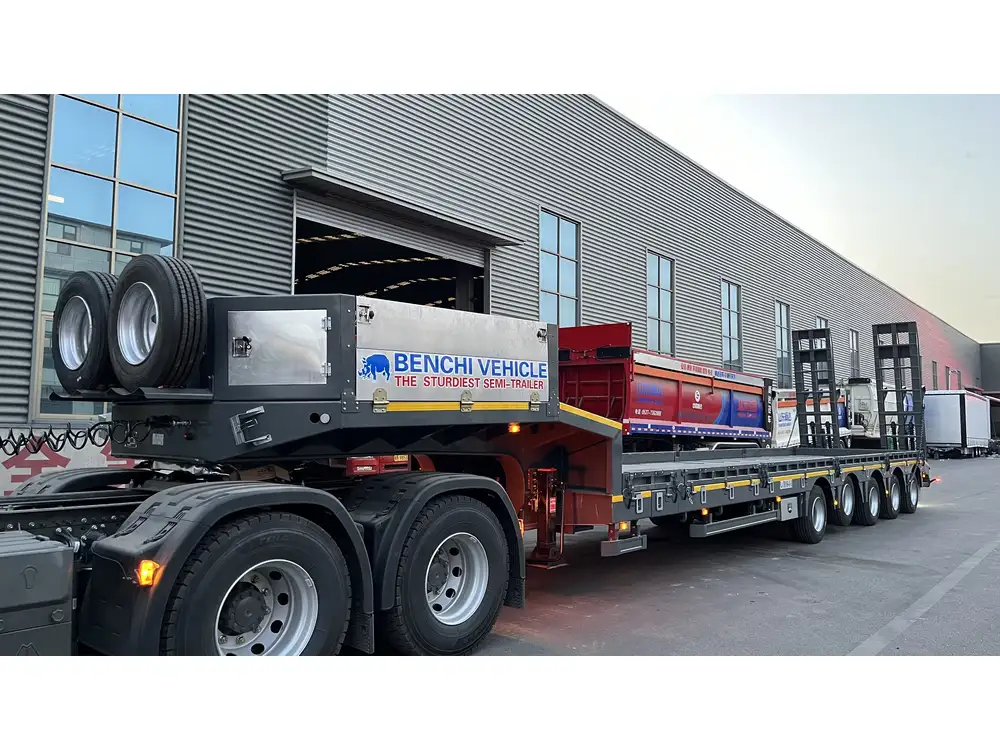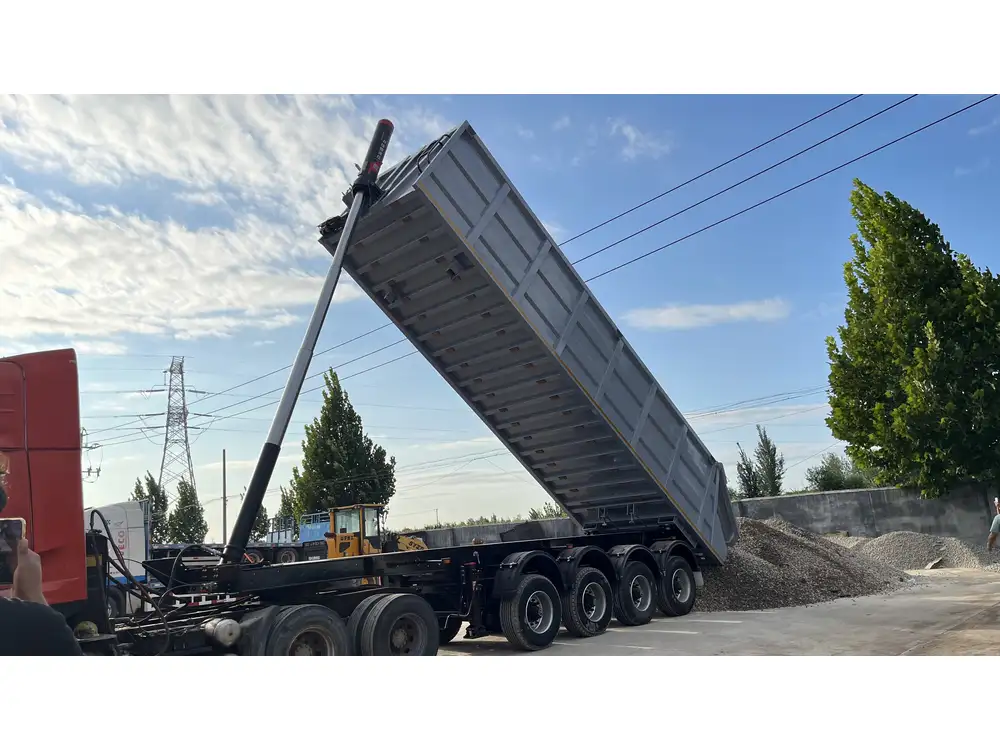Changing an airbag on a semi-trailer is a task that, while not overly complicated, requires attention to detail and adherence to safety standards. The airbag system is essential in providing suspension support, absorbing shocks, and maintaining ride quality. If you’re experiencing issues such as rough rides, uneven tire wear, or sagging trailers, it might be time to replace the airbag. Here we provide a comprehensive guide for both novice and experienced mechanics to help you successfully replace an airbag on a semi-trailer.
Understanding the Airbag Suspension System
The airbag suspension system plays a critical role in the functionality of semi-trailers. Here’s a brief overview:
| Component | Function |
|---|---|
| Airbag | Air-filled rubber component that absorbs shocks and provides suspension support. |
| Compressor | Pumps air into the airbag to maintain desired pressure and adjust ride height. |
| Control Valve | Regulates air flow between the airbag, compressor, and external environment. |
| Air Lines | Tubes that transport air to and from various components of the suspension system. |
Signs You Need to Replace Your Semi-Trailer Airbag
Keeping an eye out for these signs can help you determine when it’s time to replace your airbag:
- Visible Damage: Cracks or tears in the airbag material.
- Uneven Loading: One side of the trailer appears lower than the other.
- Increased Bouncing: Damping performance is compromised, causing excessive sway.
- Air Leak Sounds: Hissing noises that indicate air escaping from the system.
- Error Codes: If equipped with electronic monitoring, look for suspension fault codes.

Tools and Materials Needed for Airbag Replacement
Prior to beginning the replacement process, gather the necessary tools and materials. A well-organized workspace will facilitate a smoother procedure.
Tools:
- Jack and jack stands
- Wrench set (including socket wrenches)
- Torque wrench
- Screwdrivers (flathead and Phillips)
- Pliers
- Safety goggles
- Gloves
Materials:
- Replacement airbag (ensure it’s compatible with your trailer model)
- Air lines (if damaged)
- Thread sealant
- Lubricant (suitable for rubber components)

Step-by-Step Procedure for Changing a Semi-Trailer Airbag
Step 1: Safety First
Always prioritize safety. Ensure that the trailer is parked on a flat surface, and engage the parking brake. Use wheel chocks to prevent any accidental movement.
Step 2: Raise the Trailer
Utilize a hydraulic jack to elevate the side of the trailer where you will be replacing the airbag. Ensure that it is secured using jack stands to prevent accidental lowering.

Step 3: Remove the Old Airbag
Identify Mounting Points: Locate the bolts securing the airbag. Commonly, there will be two bolts at the top and two at the bottom.
Disconnect Air Lines: Carefully remove the air lines connected to the airbag, using pliers if necessary. Be prepared for any residual air to escape.
Unfasten Bolts: Using the appropriate wrench, remove the bolts securing the airbag. Store these bolts safely as you’ll need them for the installation of the new airbag.
Remove the Airbag: Once disconnected, carefully pull the airbag from its mount. Inspect the area for any debris or damaged components.
Step 4: Prepare for New Airbag Installation
Clean the Area: Remove any dirt or debris from the mounting area to ensure a secure fit.
Inspect the Components: Examine the compressor, control valve, and air lines for any signs of wear or damage. Replace as necessary.
Step 5: Install the New Airbag
Align the New Airbag: Position the new airbag in place of the old one, ensuring it fits snugly into the mounting brackets.
Secure the Airbag: Fasten the top and bottom bolts; do not fully tighten yet. This will allow for slight adjustments later.
Reconnect Air Lines: Carefully reconnect the air lines to their respective ports on the new airbag. Apply thread sealant to avoid leaks.
Torque the Bolts: Using a torque wrench, tighten the bolts to the manufacturer’s specifications. This ensures the airbag is secure while maintaining integrity under pressure.

Step 6: Lower the Trailer and Test
Lower the Trailer: Carefully remove jack stands and lower the trailer back to the ground.
Test the Airbag System: Start the engine and activate the air suspension system. Allow the compressor to fill the airbag and check for any abnormal noises. Ensure the airbag is inflating and deflating correctly.
Check for Leaks: Inspect the connections for any signs of air leaks, ensuring a tight seal.
Troubleshooting Common Issues
If you encounter issues post-installation, consider the following troubleshooting tips:
| Issue | Possible Cause | Solution |
|---|---|---|
| Airbag not inflating | Compressor failure | Replace or repair compressor |
| Uneven height | Leaking air lines | Inspect and replace damaged air lines |
| Excessive bounce | Damaged control valve | Test and replace control valve if necessary |
| Hissing sounds | Loose connections or damaged airbag | Recheck all connections and tighten bolts |
Maintenance Tips for Airbag Suspension Systems
To prolong the life of your semi-trailer airbag system, consider the following maintenance tips:
- Regular Inspections: Check for abrasions or wear at least every couple of thousand miles or prior to long trips.
- Inspect Air Lines: Make sure air lines are free from kinks or bends which could lead to restricted airflow.
- Check the Compressor: Ensure that the compressor operates efficiently, and service it according to the manufacturer’s recommendations.
- Maintain Correct Pressure: Monitor and maintain the proper air pressure in the airbags as per the manufacturer’s specifications.

Conclusion
Successfully changing an airbag on a semi-trailer involves a systematic approach marked by attention to detail and adherence to best practices. By following this comprehensive guide, you can ensure a smooth replacement process that not only enhances the performance of your suspension system but also extends the lifespan of your trailer. Remember, regular maintenance and prompt attention to any signs of wear will keep your semi-trailer operating at its best.
For additional queries or professional support, consider reaching out to a qualified technician or a local repair shop that specializes in trailer maintenance. Investing time in education and proper maintenance can save significant costs in the long run, ensuring your fleet operates safely and efficiently.



